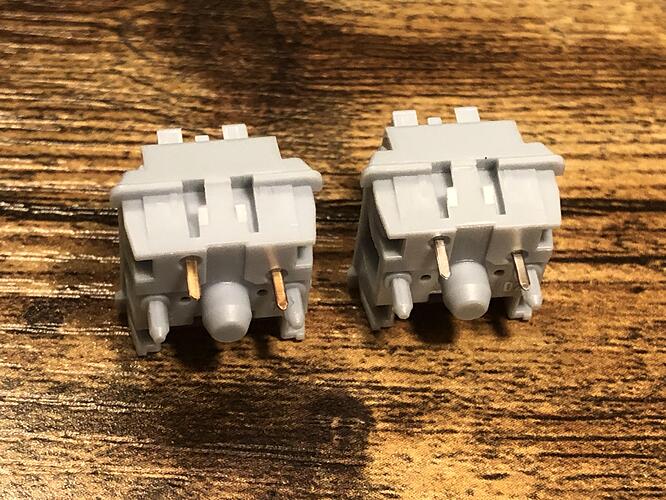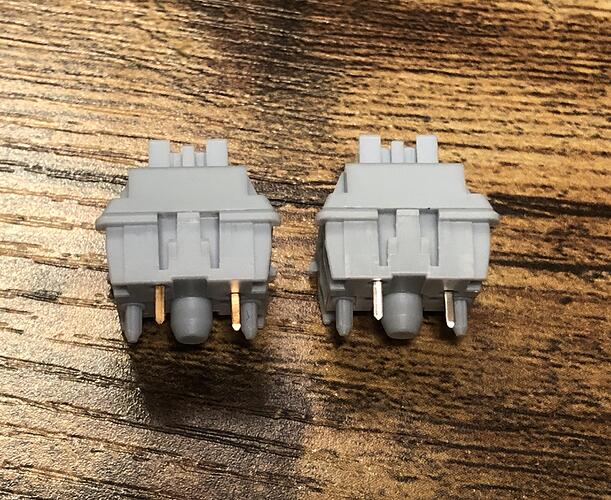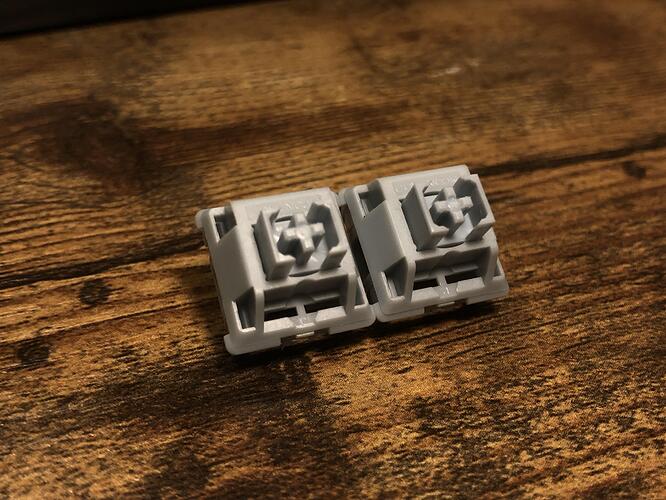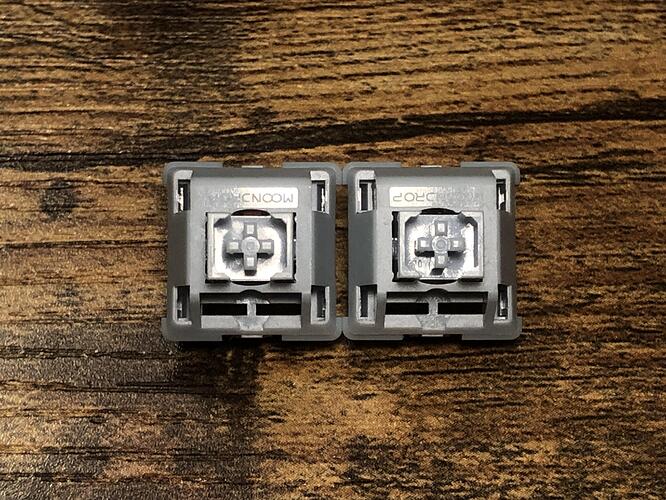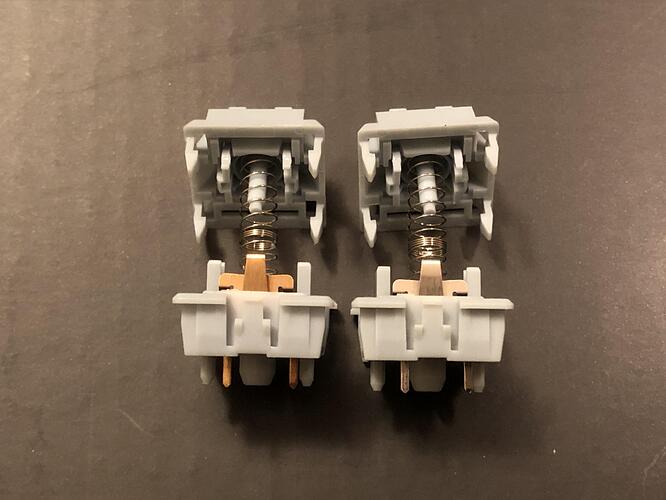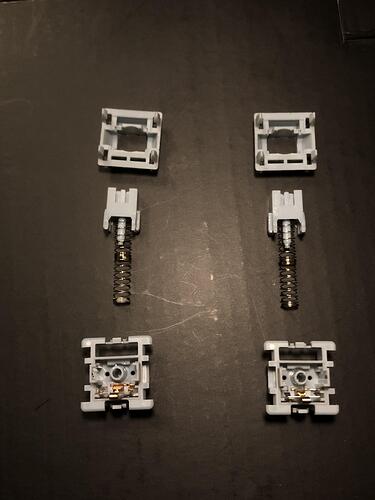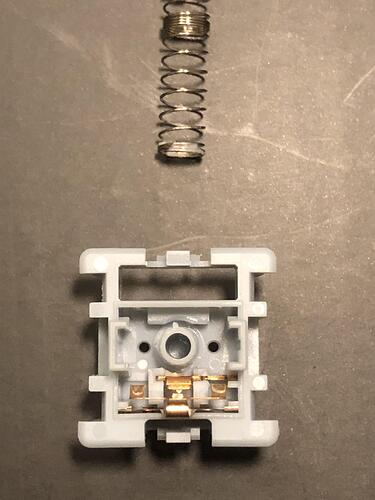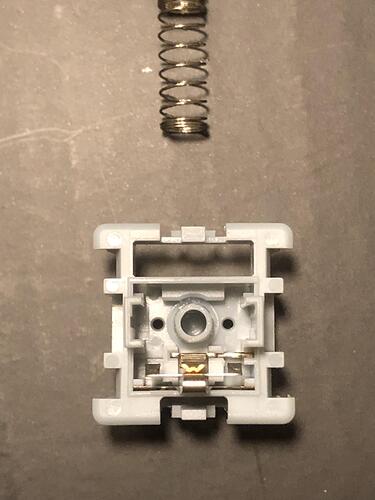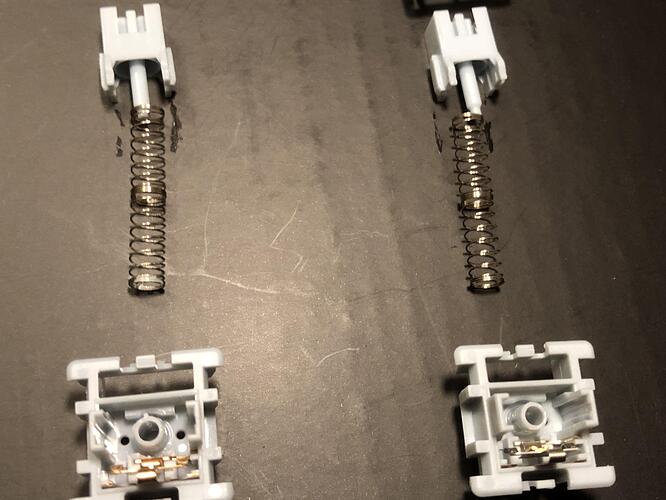Moondrop Tessence
This time I decided to buy more of a switch I liked to do a couple builds with it, one for myself and one for a friend. I thought they didn't sound quite as clean out of the box as I remembered, so I looked a little more closely and saw a couple things had changed:
This is the quick and easy way to tell which is which; the first run (that sounds better to me) is on the left with the copper pins, and the updated run is on the right with the silver pins.
Here’s a phone recording, old switch first then the new one:
It’s not captured all that well, but I hear more metallic sound in the new switch - and as we’ll see below there appears to be a good reason for that.
Some more comparison photos:
The pins give it away, but as far as I can tell the plastic parts (and spring) are otherwise the same, so I don’t think it’s possible to tell just from looking at the top.
Extra easy to tell when looking at the leaves - this is actually what tipped me off to begin with, when I was opening them up:
The leaf may be the visible difference, but I don’t think it’s actually the critical one.
Let’s take a closer look - old switch first:
The old switch above has something akin to a “donut-dip” application of white grease on the base of the spring and around the tube, clearly visible.
Now let’s look at the new switch:
There’s still a sheen of lube on the tube, but I can’t see anything substantial at the base or on the spring. I’m willing to bet this is exactly where that extra metallic noise is coming from - and unfortunately, a critical distinction that takes this from an “audiophile” stock switch to just another pretty good tactile. I can’t recommend these anymore unless you don’t mind to re-tune them yourself - in which case they’ll be great - but if you’re gonna do that anyway, might as well spend less money on the switches.
The rest of the lubing seems to be the same; I’m guessing the same oil that’s on the stem is now being used on the tube / spring base instead of whatever thicker grease they had before. The actual purpose of thicker grease like that in many cases is vibration dampening, so it’s no surprise these revised versions lacking it don’t sound quite as good from the factory. The silver lining is that if you ended up with a set if these, they are totally fixable with the pretty simple process of donut-dipping.
Update: after some more testing, it’s not just the lack of donut-dipping that makes for the metallic sound, it really is the leaves themselves. Either due to material, differing clearance, or differing lube application, it’s the leaves making that crunchy ring - either by themselves or alongside the springs.
